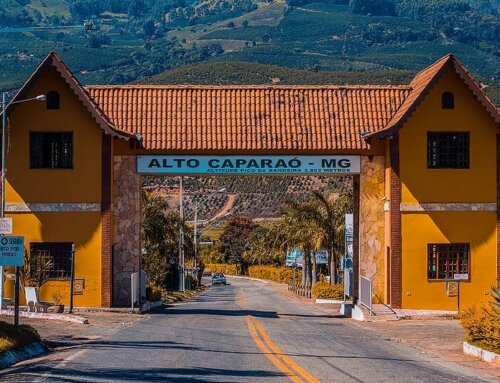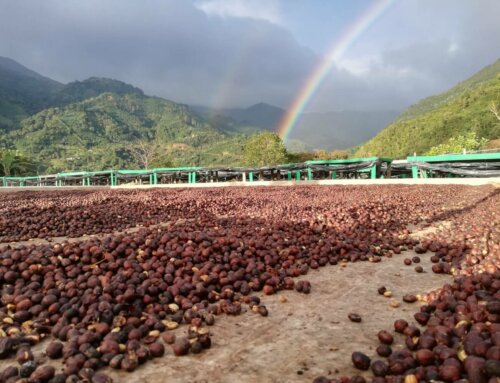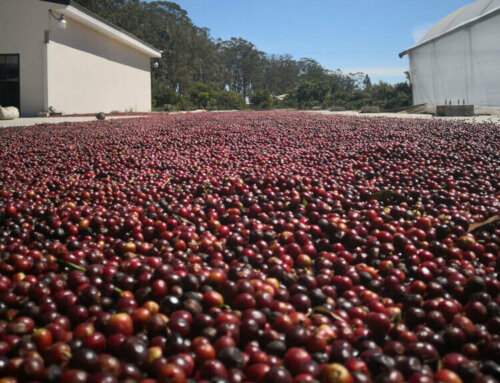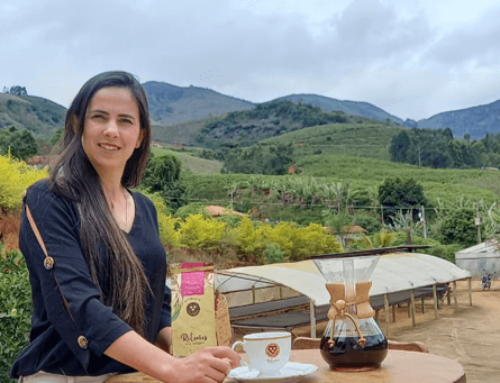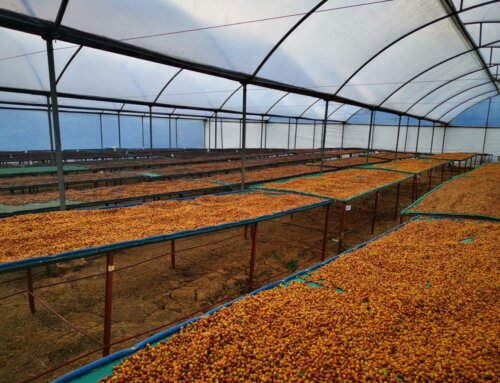FLAVOUR PROFILES
Brazilian coffees tend to have a low acidity, a high body and a brown sugar sweetness, traditionally with chocolate and nutty flavours.
The two most important characteristics we look for when selecting our Brazilian lots are smooth texture and absence of roasted peanuts and/or herbaceous notes.
When these two parameters come together, everything else falls into place.
Our entry level lots would be simpler in flavour with mostly milk chocolate and roasted hazelnut/walnut, whilst our specialty tier would display fruitier characteristics such as cherry, white grapes or stone fruit.
In our microlot range you will find increased complexity and easily identifiable fruit flavours.
PULPED NATURAL
The roasts were more even in pre-roast blends and the sweet spot for each component’s espresso extraction was closer together both in pre- and post-roast blends, resulting in a sweeter and more balanced cup; and easier to work with in coffee shops.
SUPPLY CHAIN
Our sister company in Brazil, Stockler, is one of the leading coffee exporters in the country. With offices in four different states and a team of technical consultants, Stockler provide assistance and market access to small-to-medium coffee farmers. On the one hand, they work closely with large certifying bodies such as UTZ, Rainforest Alliance, Fairtrade, Organic (USDA, JAS, etc..), C.A.F.E and such; whilst on-the-other-hand they also work on small-scale sustainability programs with local communities.
We have been supporting the Forca Cafe annual contest that provides a platform to conscientious smallholders to get recognition for the quality of their work and get opportunities to connect with roasters around the world.
We currently work with GUIMA CAFE on our Specialty Natural offering. GUIMA is a group of three coffee farms located in Cerrado that has been managed by women for several year, and currently lead by the recently appointed Program Manager Lucimar Silva (2021).
Guima Estates work on promoting education and social equality in its community.
We are also into our second year (as of 2021) working with Miaki’s Fazenda Chapadao de Ferro for our Specialty Pulped Natural offering.
GOING FURTHER
HISTORY
In the 18th century, Rio de Janeiro (“January River” in Portuguese) became the main trading port in Brazil, thanks to the precious minerals, such as gold and diamond, found in the region.
As an export-driven crop, it was convenient to grow coffee in the areas surrounding Rio. These first farms were large, and, like most exotic crops at the time (cotton, sugar, etc…), revolved around slave labour.
In 1840, Brazil already accounted for 40% of the world’s coffee production which had become a pillar of its economy. When the British ended coffee trade between Brazil and Africa in 1950, the country turned towards immigrant labour and internal slavery system.
However in 1888, when slavery was abolished in Brazil, the government organised to buy all of the coffee from producers at a higher price and regulate export quantities to prevent devaluation from oversupply. This also sprung technology advances and the mechanization of coffee harvesting.
The system was fairly successful for over 40 years, until the 30’s Great Recession and an ever-growing coffee production led to a large unbalance between supply and demand resulting in Brazil destroying over 60 million bags to keep prices from nose-diving.
In the 1950’s some coffee producing countries banded together to try and stabilize the price of coffee. This group was the precursor to the ICA agreement ratified by 42 countries in 1962 (International Coffee Agreement). Under the agreement, the International Coffee Organisation would fix export quotas to keep supply in line with demand.
The Brazilian government disagreed with the ICO in 1989 and refused to accept a reduced export quota believing that the country would be more prosperous by itself. For the next five consecutive years the price of coffee went down, which partly ked to the creation of the FairTrade program in coffee.
WEATHER AND CROP CYCLES AS GLOBAL PRICING DRIVERS
The weather has been one of the main topics of conversation between coffee traders for almost two centuries and a major trend-setter in pricing direction.
Frost, droughts or heavy rains would lead to lower supply whilst favourable weather conditions would produce larger crops, directly affecting the relationship between supply and demand, and hence market pricing.
You might also have heard the terms “On” and “Off” years or “On cycle” and “Off cycle”. Biologically, coffee trees alternate between a large production one year (On), to a smaller production the following year (rest year, or “Off”). This is a world-wide natural behavior, but because Brazil is such a large coffee producer, its crop cycles have a global effect on coffee pricing: “On” years will have influence prices down whilst “Off” years will push prices up.
